
Completing
the Texas Out
of Hospital Do
Not Resuscitate
Form
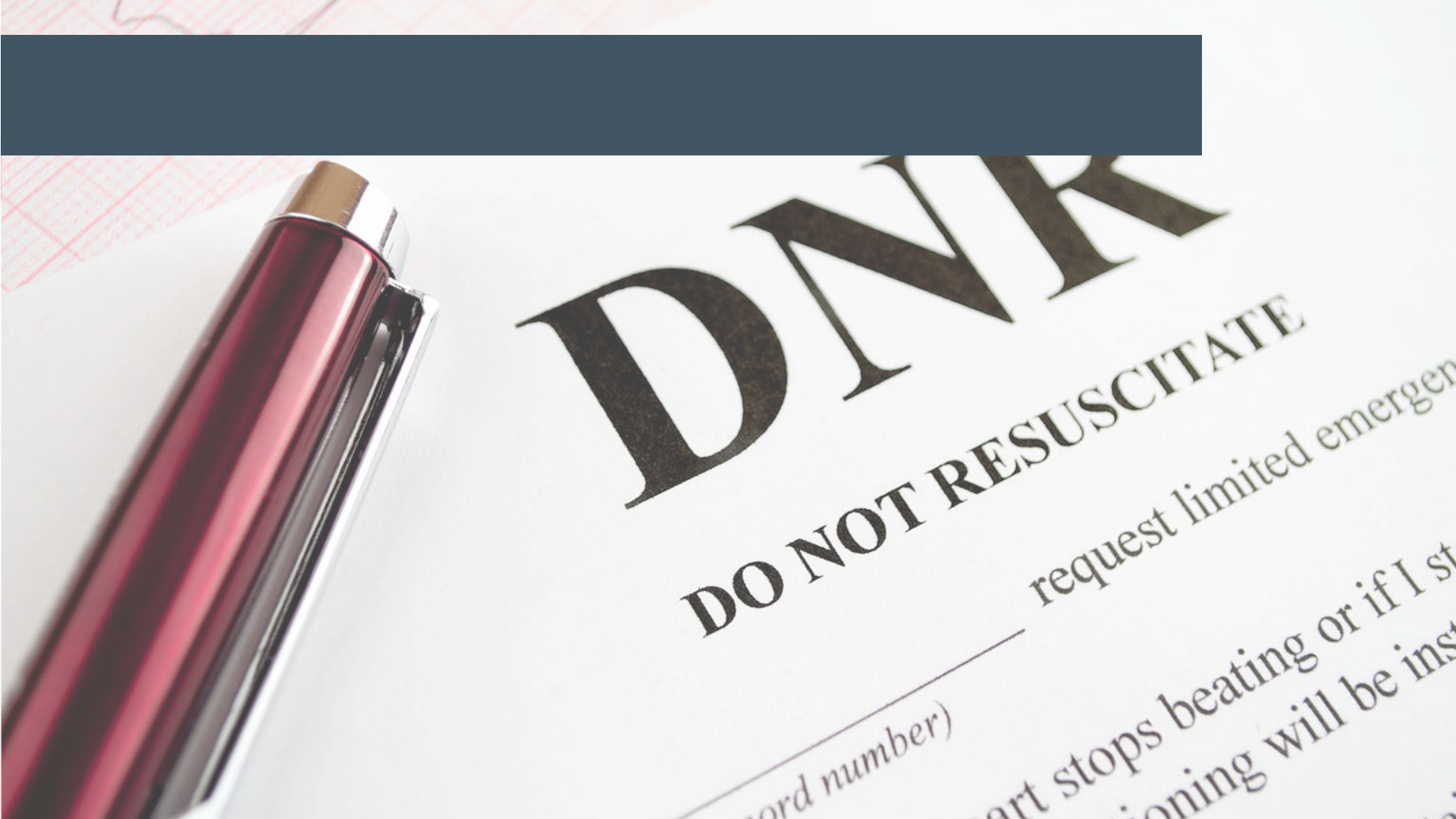
Introduction

Why do I need one?
The Out of Hospital Do Not
Resuscitate (OOH DNR) order
allows you to refuse specific
life-sustaining treatments
outside of the hospital.
These treatments include:
• Cardiopulmonary
resuscitation (CPR)
• Advanced airway
management (intubation)
• Defibrillation (AED)
• Artificial ventilation
• Transcutaneous cardiac
pacing (use of external
pacemaker)
What is it?
An OOH DNR form or identification
will tell health care providers not
to use CPR and other life-
sustaining techniques.
If you do not have an OOH DNR
Order, health care providers may
do everything medically possible
to revive you.
What do I do?
• Complete the form. Keep your
original form.
• Talk with family, clergy and/or
friends.
• You can also notify health care
providers of your decision by
wearing an approved ID
necklace or bracelet.
Out of Hospital Do Not Resuscitate Form

Points to Remember
• Anyone can use an OOH DNR
Order.
• Parents/guardians of minors
diagnosed with a terminal
illness or irreversible
condition may complete an
OOH-DNR on behalf of the
patient.
• To show that you have an
OOH DNR Order, you must
have: your original form, a
copy of the completed form,
or an approved ID necklace
or bracelet.
• The OOH DNR Order pertains
to health care decisions, not
to financial matters.

Where can I find the form?

Get the OOH DNR form
Ask your doctor for the OOH DNR form.
OR
Go to the Texas Department of State Health Services (DSHS) website.
dshs.texas.gov/dshs-ems-trauma-systems/out-hospital-do-not-resuscitate-program
Here you can download the form:
• The form is available in English and Spanish.
• Print the form on standard 8 1/2 x 11, letter-size paper.
• Print the OOH DNR Order form on the front and the instructions on the back of the
sheet.
• You can make copies of a completed OOH DNR.

Health Care
Professionals
Distributing forms to be filled out
by patients, families, and doctors
Blank OOH DNR forms must include the OOH
DNR form on one side and the instructions on
the other side.
The instructions contain important
information. The patient, family, witnesses,
and doctors should review before signing.
Note: Emergency medical services personnel
can honor an OOH DNR form that appears to
have been properly executed, even if the
instructions are not on the opposite side.

Additional Resources
The DSHS website also contains:
• Frequently asked questions about
OOH DNR
• Information on ordering OOH DNR
medical devices
• Links to Out of Hospital Do Not
Resuscitate Legislation
Other Advanced Directive forms are
available on the Texas Health and
Human Services website:
• Directive to Physicians and Family or Surrogates
• Medical Power of Attorney (MPOA)
• Statutory Durable Power of Attorney (SDPOA)
• Declaration for Mental Health Treatment (DMHT)|
Visit:
hhs.texas.gov/formas/advance-directives

Filling Out the OOH DNR Form
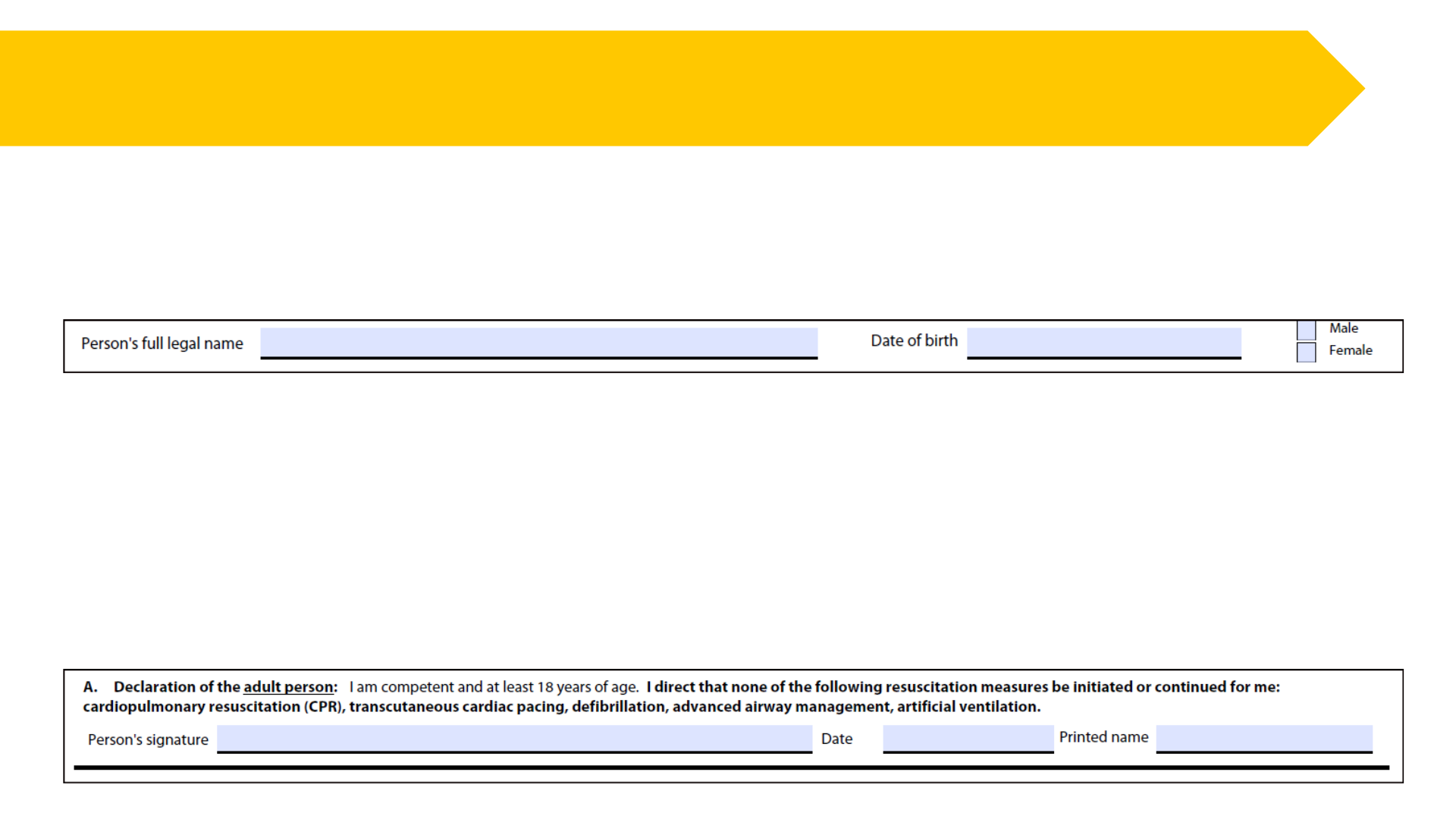
Who is completing the form?
Patient: Fill out patient’s full legal name and date of birth. Select male/female.
Declarant: Sections A-F define who is completing the OOH DNR form on behalf of the
patient.
Let’s break it down!
Section A.
This box is for a patient who is 18 years of age and competent. The patient should sign his/her
name, date the document, and print or type his/her name.
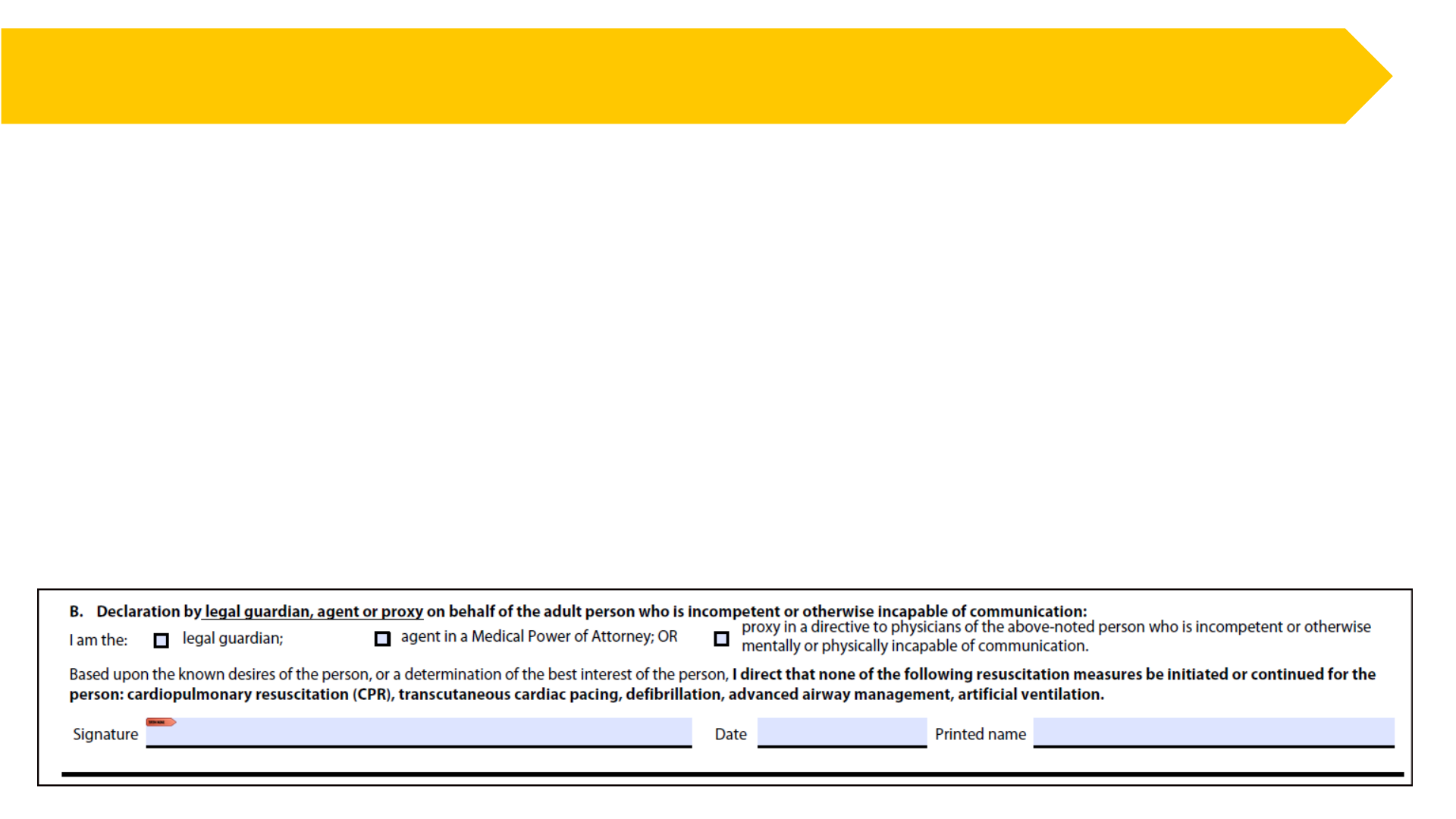
Section B is completed on behalf of an adult person who is incompetent or otherwise incapable
of communication.
Who can sign:
• a legal guardian
• the person with medical power of attorney for the patient
• a proxy in a directive to physician for a person who is incompetent or otherwise mentally or
physically incapable of communication
The person acting on behalf of the patient must check the appropriate box in this section, sign
and date the form, and then print or type his/her name.
Section B

Section C is completed on behalf of the adult person who is incompetent or otherwise incapable
of communication.
Who can sign:
• patient's spouse
• patient's reasonably available adult children
• patient's parents
• patient's nearest living relative
The relative acting on behalf of the patient must check the appropriate box in this section, sign
and date the form, and then print or type his/her name.
Section C
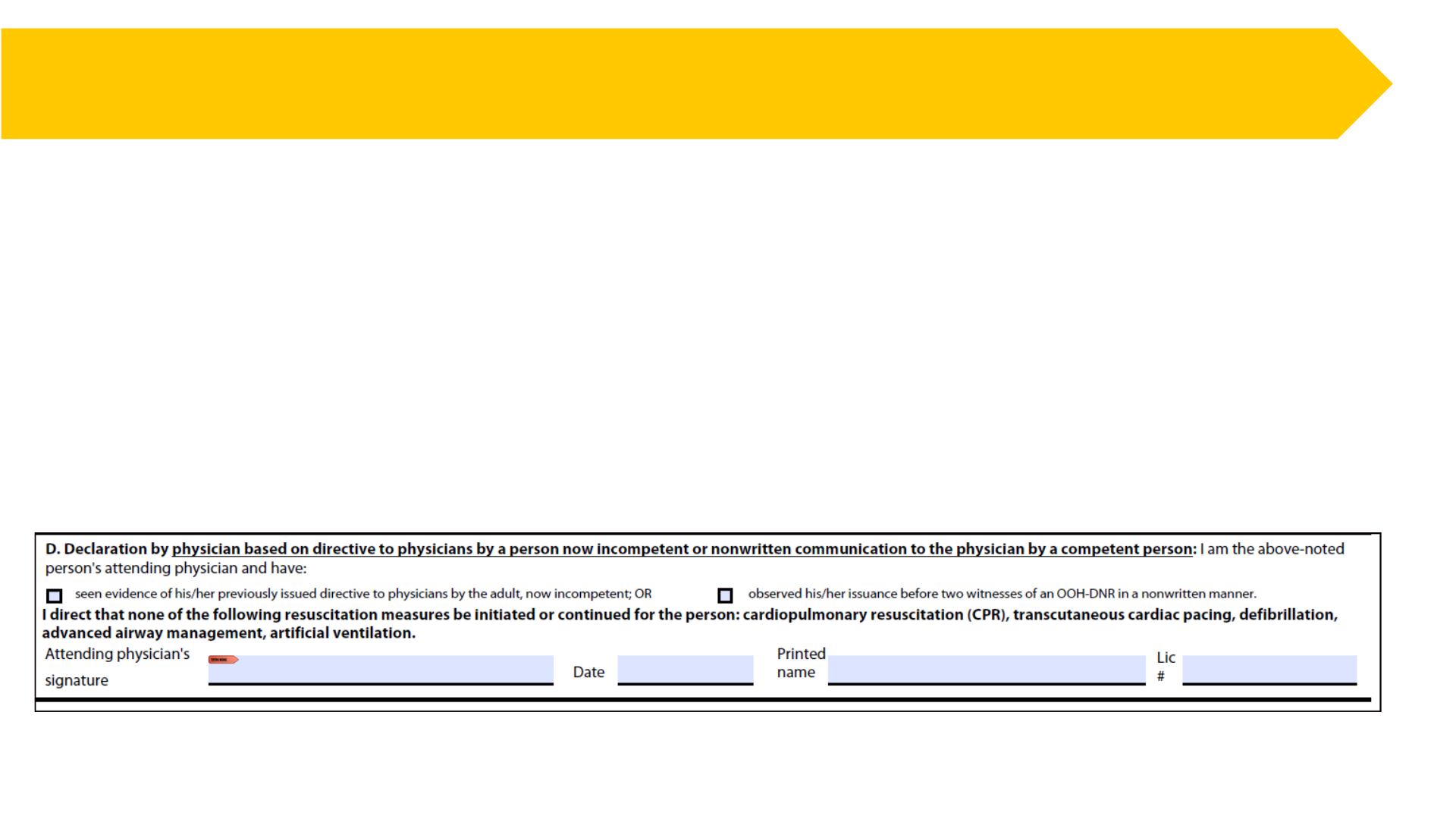
Section D is completed by a physician.
The physician can sign if they:
• have seen that a patient has issued a previous directive to physician, or
• observes a person issuing an OOH-DNR by non-written communication.
The physician must check the appropriate box in this section, sign and date the form, print or
type his/her name, and provide his/her license number.
Section D
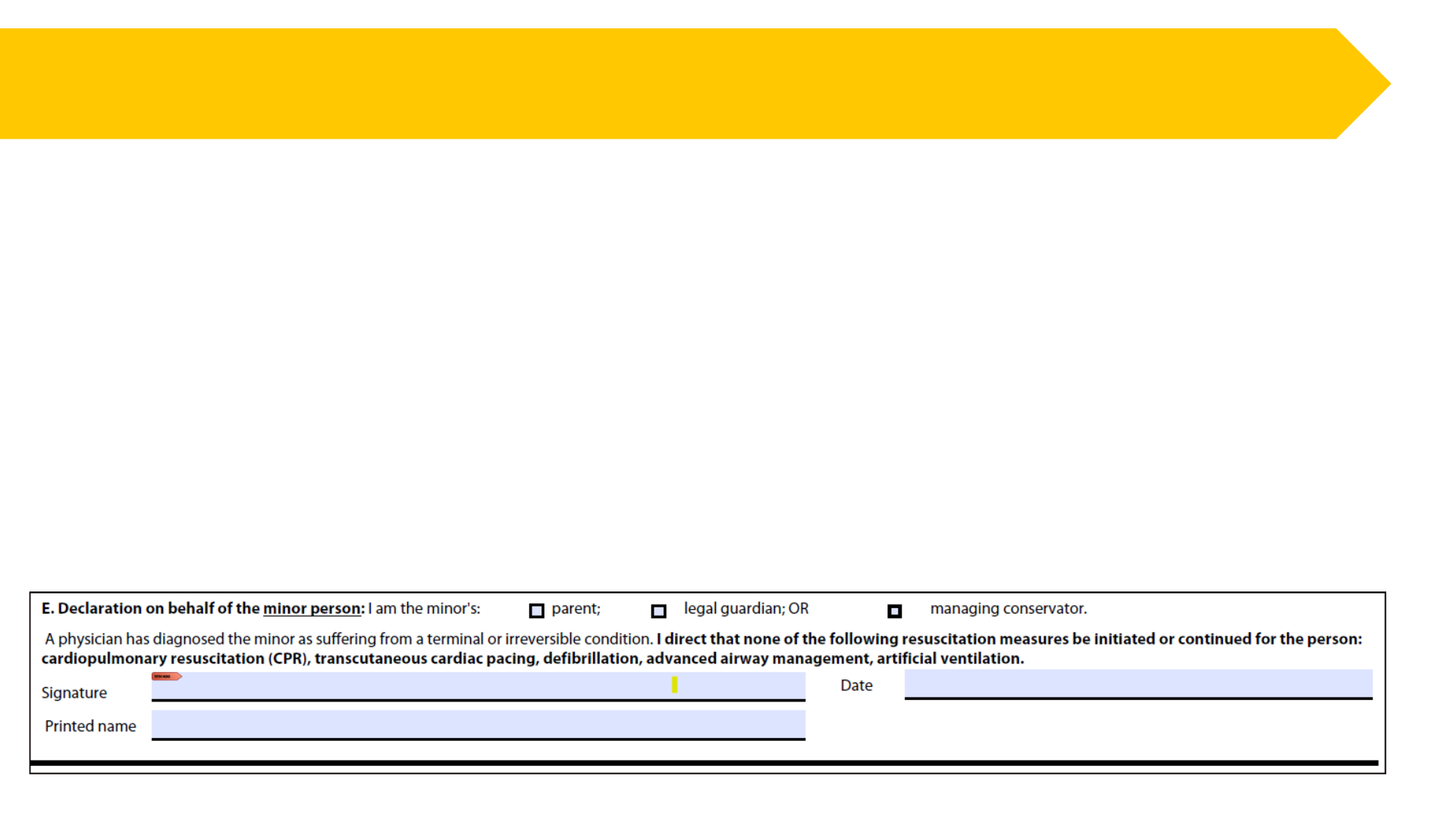
Section E is completed on behalf of a minor.
Who can sign:
• minor’s parent
• legal guardian
• managing conservator
The minor must be diagnosed as suffering from a terminal or irreversible condition by
a physician.
The person acting on behalf of the minor must check the appropriate box in this section, sign
and date the form, and then print or type his/her name.
Section E
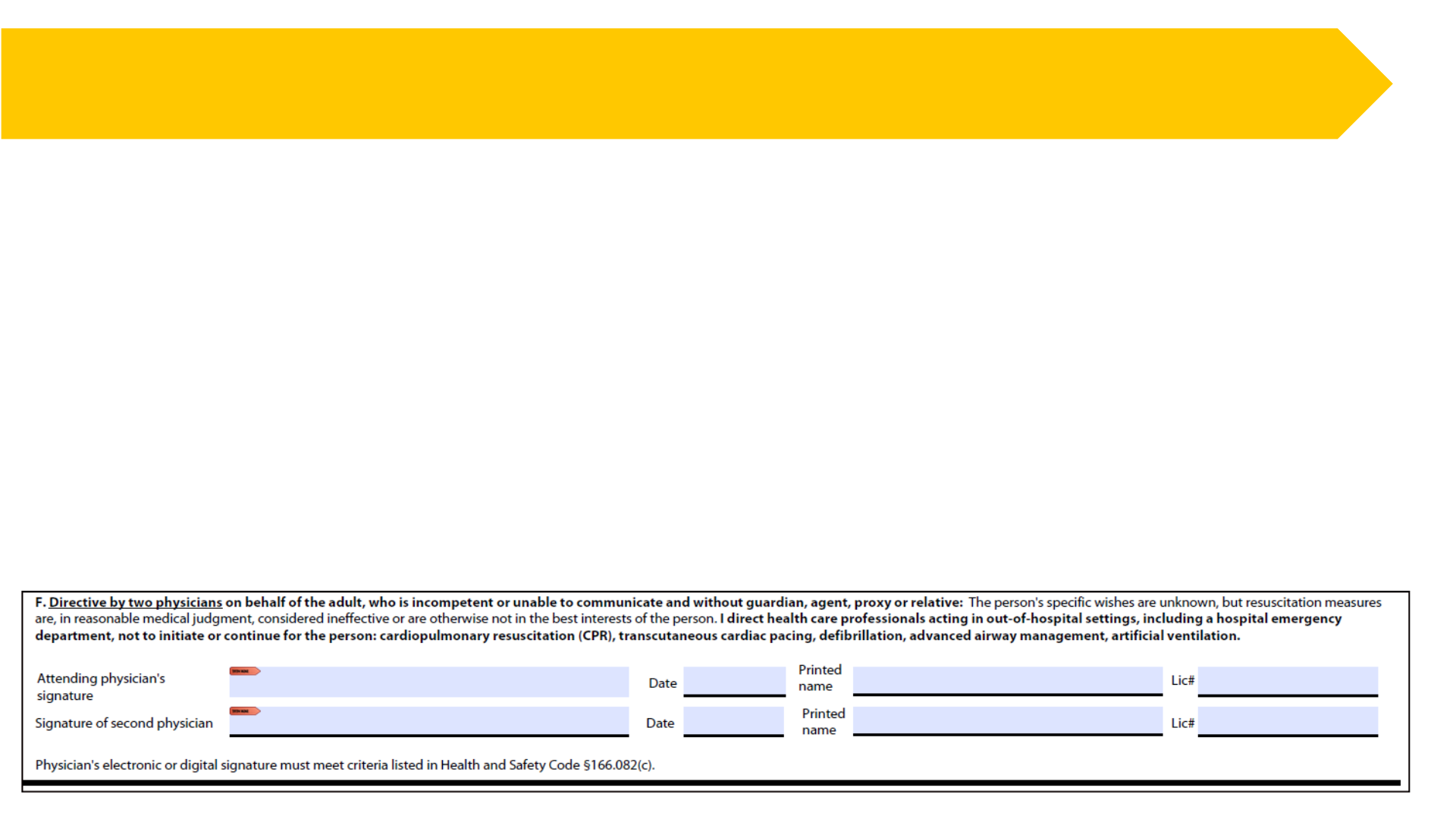
Section F is completed by two physicians on behalf of an adult patient who is incompetent or unable
to communicate and without a guardian, proxy, or relative.
The attending physician may execute the DNR by signing and dating the form, with the concurrence
of a second physician.
• The second physician must not be involved in the patient’s care.
• The second physician can be a representative of the health facility’s ethics or medical committee.
Witness or notary signatures are not required when two physicians execute the OOH DNR
Order in this section.
Section F

Witnesses
You have two witnessing options
when filling out the OOH DNR form.
• Two witnesses or a notary public
must sign that they have
witnessed the patient’s signature
or the signature of a person(s)
acting on the patient’s behalf in
sections A-E.

Witness one is a “qualified witness” and may not be:
• A person designated to make a treatment decision for the patient
• Related to the patient by blood or marriage
• Entitled to any part of the estate
• Be a person who has a claim against the estate of the patient
• The attending physician or an employee of the attending physician
• An employee of a health care facility in which the patient is being cared for, if he or she is
involved in providing direct patient care to the patient (social workers, chaplains, and people who
provide nutrition services are not considered to provide direct patient care)
• An officer, director, partner, or business office employee of a health care facility in which the
patient is being cared for or any parent organization of the health care facility
Witness Two
• May be any competent adult
When Using Two Witnesses

Using a Notary
A notary public can witness the
signature of the person filling out
the form in place of two
witnesses.
Note: A notary cannot
acknowledge the witnessing of
the person making an OOH-DNR
order in a nonwritten manner.

OOH DNR Medical Devices
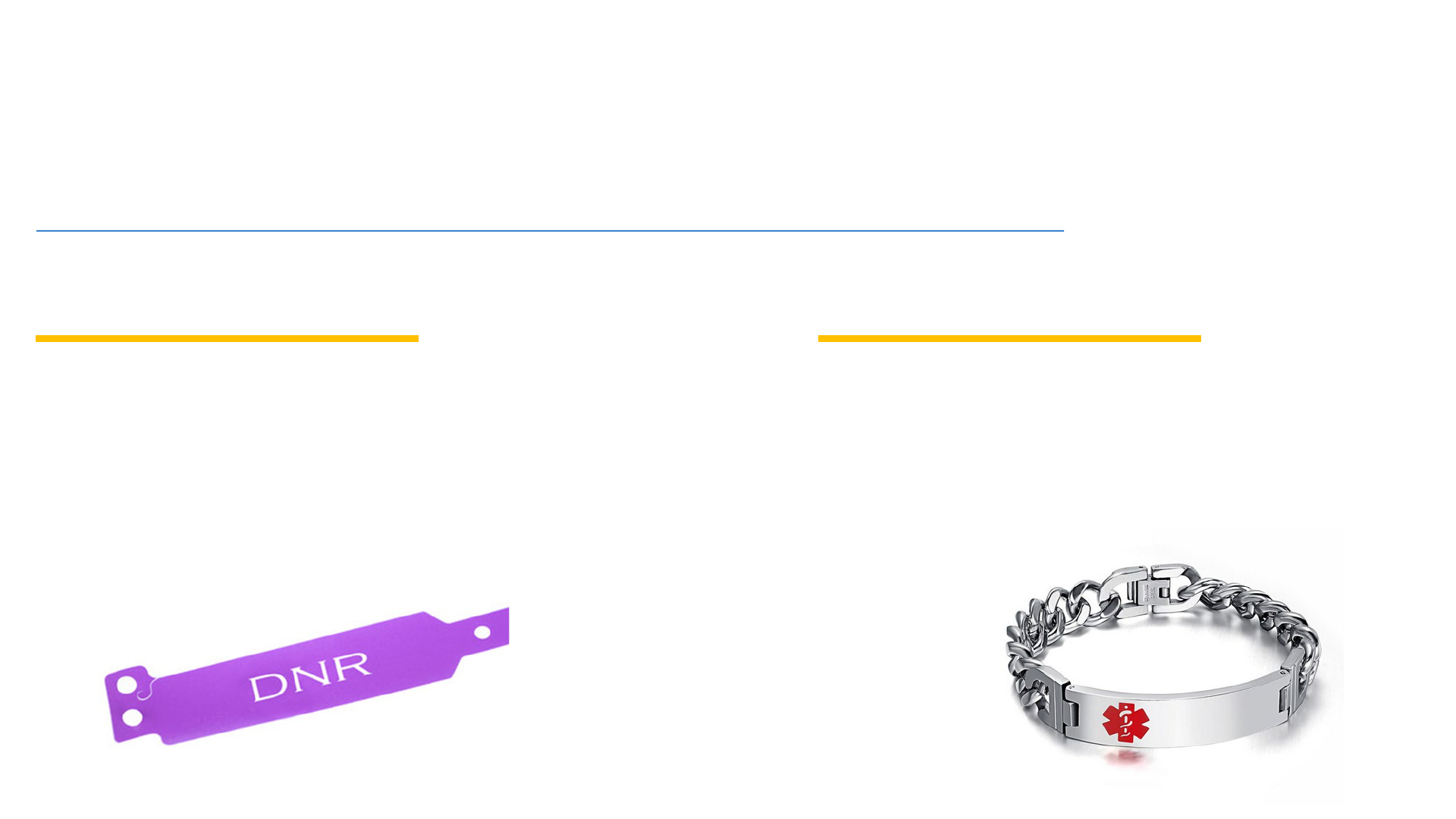
An intact, unaltered, easily identifiable ID with
the words "Texas" and "Do Not Resuscitate."
(Or a representation of the geographical shape
of Texas and the word "STOP" imposed over
the shape.)
An intact, unaltered, easily identifiable
metal bracelet or necklace with the
words "Texas Do Not Resuscitate –
OOH”.
Metal ID Device
Plastic ID Device
Ordering an OOH DNR Medical Device
After fully completing the Texas OOH DNR Order form, the patient may buy, at their own expense, an OOH DNR
ID device. EMS personnel will honor the device in lieu of an original OOH DNR Order form. A list of approved
manufacturers can be found here:
dshs.texas.gov/dshs-ems-trauma-systems/out-hospital-do-not-resuscitate-program

Questions



